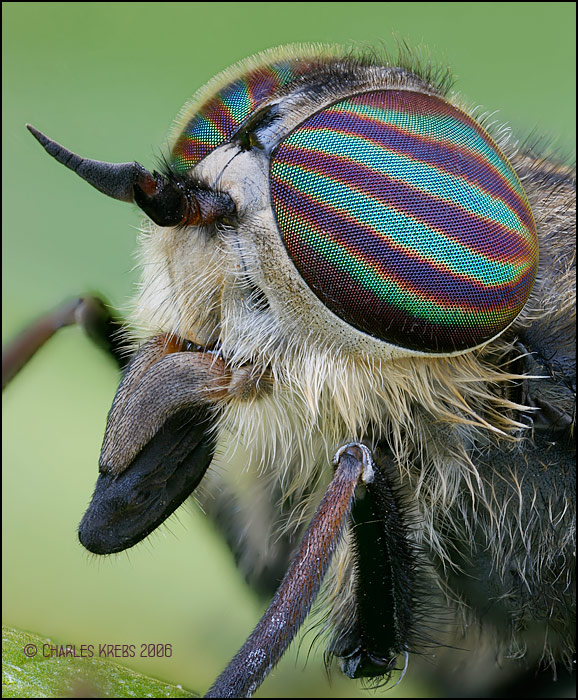Rik... I checked and the number of frames used were 28, 15, and 8 respectively. I used that focus rail/focus rack set up I showed you a while back, with a flat platform out front (at C) and a "doped up" horsefly. (Actually I assembled it with these images in mind). I have put a picture of it
here for others to see if interested. As it turned out I changed focus with the lens focus ring. Even though the light was very even, if I changed camera/subject distance with either rack I noticed the colors in the eye facets changed a little and I was worried it wouldn't stack properly. The biggest challange was getting a smooth series of shots with about 150 of this guys buddies buzzing around me trying to extract some of my blood

(not to mention the mosquitoes!)
DaveW... this technique is used extensively in microscopy. You can see a two much smaller flies done with a microscope and stacking
here and
here. Alan Hadley's CombineZ program is free and quite good. (Dramatically improved in the past year or so). With version 3 and now version 4 Helicon Focus offer a very nice solution at a reasonable price. Others programs "designed" for microscope use tend to be a part of a comprehensive software package with many other functions, and can cost well over $1000. (and for my purposes the "stacking" capability is not any better). I use both CombineZ and Helicon, as one will sometimes do a better job with certain stacks. But ultimately I probably wind up using Helicon about 90% of the time. The technology for getting these "stacks" can be as simple as manually changing focus, to very sophisticated, with one of the more novel approaches I have seen found at:
http://www.photron.com/products.cfm?id=FocusScope
They have the microscope objective connected to a piezoelectric actuator and synchronized with a high-speed camera.





